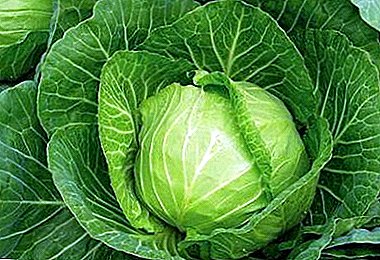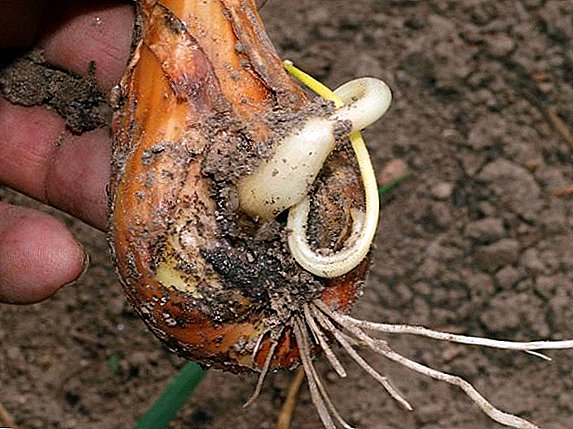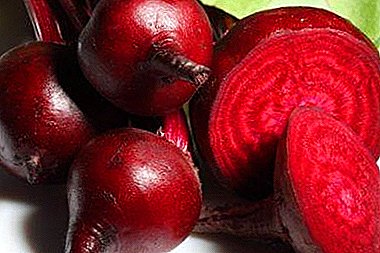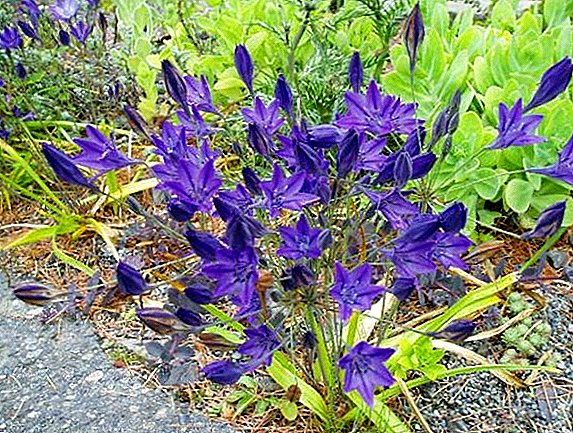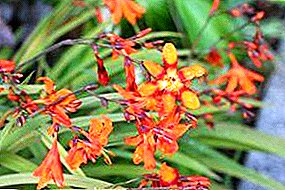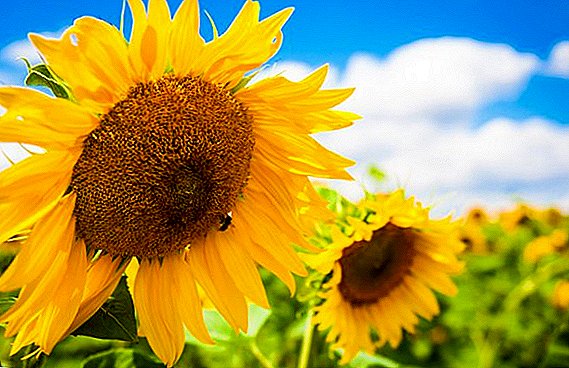 Mahonia padubolistnaya is a very beautiful ornamental plant, it is an evergreen shrub, looks and its purple berries resemble grapes, hence its other name "Oregon grapes". However, mahonia has strong medicinal properties that can heal the digestive organs and get rid of skin diseases.
Mahonia padubolistnaya is a very beautiful ornamental plant, it is an evergreen shrub, looks and its purple berries resemble grapes, hence its other name "Oregon grapes". However, mahonia has strong medicinal properties that can heal the digestive organs and get rid of skin diseases.
Mahonia hollow leaves
In the rhizomes and bark of Magonia, there is a rich list of valuable substances: tannins, ascorbic acid, useful organic acids, various alkaloids (especially large amounts of berberine).
 In addition to all this, berries contain a whole list of minerals to support the production of active substances in the human body: manganese, sodium, zinc, copper - and all this in the amount that is really necessary for the body.
In addition to all this, berries contain a whole list of minerals to support the production of active substances in the human body: manganese, sodium, zinc, copper - and all this in the amount that is really necessary for the body.
Did you know? Mahonia is named after American grower Bernard Mac Magon. He first described this plant in 1806.
Useful properties of holonwood magonia
In their homeland, in North America, mahonia was used as a dye. Many years ago, the Indians dyed fabric and treated skin with an extract from its branches. Also, its berries are still used as a dye for wines and juices, the berries give them a gorgeous red-ruby color.
Useful properties of the fruit of the plant
Mahonia padubolistnaya, or rather her berries, found application for the treatment of all organs of the gastrointestinal tract, they will help with constipation, soften stools. As a choleretic - eliminate the disease of the gallbladder and get rid of hemorrhoids. Also berries and tea from them will perfectly help with colds, relieve fatigue, providing a tonic effect on the body.
Mahonia is a hollow and medicinal properties of its berries are widely known in folk medicine, they have an antibiotic effect, prevent cancer, thanks to berberine, bone marrow protection is stimulated, cells are restored faster after chemotherapy and radiation procedures.
Important! In large concentrations, mahonia can have a toxic effect on the human body, therefore, it is necessary to observe the dosage. Pregnant women should refrain from its use.
Medicinal properties of Magonia bark
 The bark and root Magonia, more precisely decoctions of these, they are well struggling with irritable bowel problems, will help get rid of diarrhea. Due to the content in its composition of tannins - tannins, teas and decoctions of the bark are a good stimulant.
The bark and root Magonia, more precisely decoctions of these, they are well struggling with irritable bowel problems, will help get rid of diarrhea. Due to the content in its composition of tannins - tannins, teas and decoctions of the bark are a good stimulant.
Magonia Bark Extract will help in the treatment of: hepatitis, dysbacteriosis, cholecystitis. Decoctions of bark widely used to treat skin diseases such as rashes, herpes, psoriasis, eczema.
The Mahonia Padubal has useful properties to improve blood circulation, lymph, strengthen the walls of blood vessels and capillaries.
Important! Tannin, contained in the bark of magonia, acts as an antioxidant, it slows down the aging process of human cells.
What is useful dried flowers
A hollow-leafed Mahonia blooms in early May and blooms throughout the month. Collected and dried flowers they help in curing gout, as they contain colchicine.
The use of magonia in traditional medicine, recipes
 In Magonia, all parts of the plant are useful: berries, bark, roots, flowers, branches. From each part of the plant you can make tea, decoctions, infusions. Due to its combined composition, the holly-headed mahonia has strong medicinal properties, the main thing is to know how and in what cases to take it.
In Magonia, all parts of the plant are useful: berries, bark, roots, flowers, branches. From each part of the plant you can make tea, decoctions, infusions. Due to its combined composition, the holly-headed mahonia has strong medicinal properties, the main thing is to know how and in what cases to take it.
Did you know? In the course of the research, it was found that antioxidants contained in the hollow-leaf magonia are 10 times more effective than vitamin E.
How to make tea from Magonia
For tea From Magonia, you need to take 1-2 teaspoons of dried, chopped root or bark of a plant, put it in a ceramic dish, pour a glass of boiling water, put it in a water bath, bring to a boil and hold for 10-15 minutes. Cool and filter.
Take this tea 3 times a day before meals. It will have a noticeable stimulating effect on the body, support the gastrointestinal tract system, have a beneficial effect on the cardiovascular system, and is a good choleretic agent.
Preparation of infusions of magonia
Prepare the infusion can be of bark, twigs, dried flowers.
To prepare tincture, You need to take 10 g of crushed bark or upper branches of Magonia, put in a dark glass dish and add 100 g of vodka. Insist in a dark place, avoiding direct sunlight.
 Take 5-15 drops per day. This infusion will help with rheumatism, diarrhea. Cure sick kidneys and liver. Normalizes the body's metabolism.
Take 5-15 drops per day. This infusion will help with rheumatism, diarrhea. Cure sick kidneys and liver. Normalizes the body's metabolism.
For the treatment of gout need infusion of dried flowers. To prepare it, take 1-2 tsp of flowers, pour them with 1-2 cups of boiling water, insist until complete cooling and take a third of a glass half an hour before meals, 3 times a day.
Mahonia padubolistnaya and cooking
The berries of Magonia hollow are quite suitable for human consumption. Freshly picked berries have a sweet and sour taste. After harvesting the berries are poured with sugar, they can be stored for 6 months.
From the berries you can make delicious jam, jelly, jam. Add them to compotes, syrups to increase the rich taste, aroma and ruby color. Berries blend in excellent dye, which allows the use of fruit magonia in confectionery and to give color to wines.
How to procure medical raw materials
 Magonia berries are harvested after they are fully ripe, they must be oblong, have a dark blue or blackish-purple color, on top of them covered with a fluff having a gray color. Mature in August.
Magonia berries are harvested after they are fully ripe, they must be oblong, have a dark blue or blackish-purple color, on top of them covered with a fluff having a gray color. Mature in August.
On a bush, a berry can remain for 5 months after ripening, without losing its healthy and taste qualities. After collecting, they can be dried on paper sheets under sunlight or sprinkled with sugar.
Did you know? A kilogram of holonia-holland magonia contains more than 5 thousand berries.
Flowers should be collected in the second half of May, when they accumulate more nutrients. It is best to cut the inflorescence soda shears, without damaging the branches of the plant. Dried flowers on the sheets, not allowing moisture.
Roots and bark better harvest in the fall. Dig up root shoots gently, without damaging the bush. Washed and crushed. Drying is best carried out on paper sheets in a warm room, to avoid moisture.
Contraindications to the use of holly mahonia
Mahonia is hollow, despite all its useful properties, is contraindicated in such cases:
- Cholelithiasis. Magonia is a strong choleretic, with stones in the bile duct can cause serious harm to the body.
- Women during pregnancy and lactation.
- Individual intolerance. May cause nausea and diarrhea.
- People with increased acidity of gastric juice.

Mahonia holmballa has such pronounced healing properties that by planting this plant on your site, you will receive a whole storehouse of nutrients.


